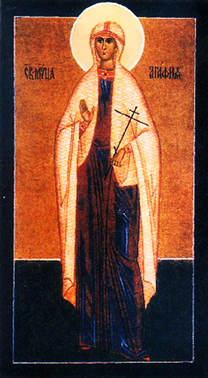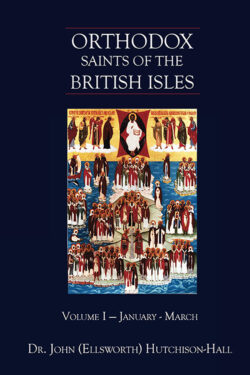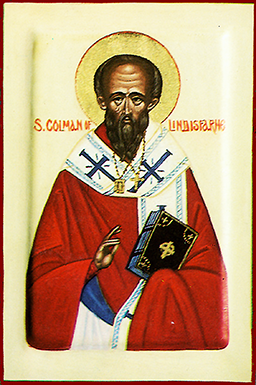
Orthodox Saints of the Pre-Schism
See of Rome
18th February (NS) — 5th February (OS) 2024
ADELAIDE, A noble maiden from the Low Lands who received monastic tonsure at an early age. When her parents founded an abbey at Willich (just west of present-day Düsseldorf, Germany), St. Adelaide was appointed abbess. Some sources say she was a wonderworker. St. Adelaide reposed in 1015.
AGATHA HILDEGARD of CARINTHIA, wife of a Count of Carinthia (present-day southern Austria and north-eastern Slovenia), who subjected her to grievous abuse. In time she was able to convert her husband to Christianity, and he reformed. Throughout her trials, St. Agatha was always devoted to the care of those in need. She reposed in 1024.
AGATHA of SICILY, a native of either Catania or Palermo in Sicily (sources vary), where she was martyred. Arrested for being a Christian during the Decian Persecution, she was subjected to barbaric torture including having her breasts were cut off. St. Agatha succumbed to her wounds reposing circa 250. Her intercession is credited with protecting Catania during successive eruptions of nearby Mt. Etna.
AGRICOLA, Bishop of Tongeren (present-day Belgium) from 384 until his repose in 420.
AVITUS of VIENNE, Alcimus Ecdicius Avitus was a son of St. Hesychius I (12th November), a Roman senator who later was third Archbishop of Vienne, and brother of St. Apollinaris (5th October) fifth Bishop of Valence. St. Avitus succeeded his father as Archbishop of Vienne in 494. He was well respected as a bishop, both by the pagan Franks and the Arian Burgundians, and he converted the Burgundian King, Sigismund (r. 516–524). St. Avitus was also a somewhat prolific writer; his letters are of great import for their record of ecclesiastical and political history of the years 499–518. He reposed circa 525.
BERTULF (BERTULPHE, BERTULPH, BERTOUL), a native of Pannonia or southern Germany, who as a young man emigrated to Flanders, settling in Renty. There influenced by St. Omer (9th September) St. Bertulf was converted and baptised. St. Bertulf undertook a pilgrimage to Rome, and upon returning to Renty, St. Omer ordained St. Bertulf to the priesthood, and he served as both a parish priest and founding-abbot of Renty Abbey. St. Bertulf reposed in 705.
GENUINUS (INGENUINUS) and ALBINUS, Bishops of Sabion (present-day Diocese of Brixen) in the Italian Tyrol. St. Genuinus flourished in the seventh century. St. Albinus, the son of St. Agatha of Carinthia (vide supra), flourished in the eleventh century.
INDRACT, information extant on this saint all dates from several hundred years after his supposed martyrdom, and hence is of questionable reliability. However, it is reasonably certain that he was a descendant of Irish chieftains who lived as a hermit for many years before undertaking a pilgrimage to Rome. While returning from this pilgrimage, he, along with several companions, was murdered by heathens near Glastonbury circa 710. Their relics were enshrined at Glastonbury Abbey, and they were venerated as martyrs.
MODESTUS, a disciple of St. Virgilius (27th November) at Salzburg, St. Modestus served as Bishop of Carinthia (present-day southern Austria and north-eastern Slovenia) in the early eighth century. St. Modestus' episcopacy is largely credited with the region embracing Christianity. He reposed circa 722.
VODOALDUS (VOEL, VODALUS, VODALIS), a missionary from the British Isles who went to evangelise Picardy and spent the later years of his life as a hermit at Soissons, where he reposed circa 725.
Get your copy of Orthodox Saints of the British Isles today.
Available at Amazon or your favourite e-bookstore.
ANGILBERT, a friend and confidante of the Emperor Charlemagne (r. 768–814), and student of the eminent Anglo-Saxon scholar/educator Alcuin of York (†804). St. Angilbert’s Latin poetry earned him the nickname “Homer”. He married Charlemagne’s daughter Bertha, but with her blessing he received monastic tonsure, with Bertha following in his footsteps. As a reward for his service, Charlemagne gave St. Angilbert the Abbey of St. Riquier, where he served as abbot, until his repose in 814.
COLMAN of LINDISFARNE, our father among the saints Colman of Lindisfarne was a monk of the seventh century Church of Scotland and Ireland. He led the Celtic party at the Synod of Whitby. His defence of the Celtic rite led to his identification as the Last of the Columban Abbots of Lindisfarne.
Born in Connaught, Ireland little is known of his early life. St. Colman was tonsured a monk at Iona, was a disciple of St. Columba (9th June) and a contemporary of SS. Finian (16th March) and Aidan (31st August). Following the repose of St. Finian, Colman was chosen to succeed him as the third Abbot/Bishop of Lindisfarne. Noted for his austere and zealous life, and held in high repute for his sanctity, his episcopate was an exemplar of frugality and simplicity of living, as well as the devotion of his clergy to their responsibilities of preaching and ministering to the faithful. St. Colman’s defence of Celtic tradition and reluctance to yield to the Roman rite fixing the date of Easter (vide Paschal Controversy) led to the Synod of Whitby. Though he put forth an eloquent defence, King Oswy made a royal decision to follow the Roman practices. This was a decision that was met with general acceptance, but one, which St. Colman could not accept, resigning from his See. St. Colman left for Iona with all the Irish and thirty English monks from Lindisfarne. He remained in Scotland for about three years, establishing several churches, and then returned to his native Ireland with about thirty Irish and English monks. They settled on the island of Inishbofin in Co. Galway where St. Colman established a monastery and school. In time, friction developed between the Irish and English monks; St. Colman resolved this by taking the English monks to the Irish mainland, where he established a monastery which he called Mayo of the Saxons, which went on to become an important centre of sanctity and learning, and in time an Episcopal See. St. Colman returned to Inishbofin, where he reposed 675.
ETHELINA (EUDELME), (Date Unknown), St. Ethelina is the patron saint of Little Sodbury in present-day Gloucestershire. No further information, including the dates she flourished, is extant.
HELLADIUS of TOLEDO, though he served as a minister in the court of the Visigothic Kings, St. Helladius true calling was monasticism. He often visited the near-by Abbey of Agali, and in time resigned his position at court, and received monastic tonsure at Agali. In 605 St. Helladius was made Abbot of Agali, and in 615 he was consecrated twenty-sixth Archbishop of Toledo. St. Helladius served the Archdiocese of Toledo until his repose 632.
LUCIUS, SILVANUS, RUTULUS, CLASSICUS, SECUNDINUS, FRUCTULUS, and MAXIMUS, (Date Unknown), a group of martyrs in North Africa of whom nothing besides their names is known.
MAXIMUS, CLAUDIUS, PRAEPEDIGNA, ALEXANDER, and CUTIAS, a group of martyrs in 295 in Rome during the Diocletianic Persecution of whom nothing further than their names is known.
Prior to the Schism the Patriarchate of Rome was Orthodox, and fully in communion with the Orthodox Church. As Saint John of Shanghai and San Francisco +1966 said “The West was Orthodox for a thousand years, and her venerable Liturgy is far older than any of her heresies”.
Details of British Saints excerpted from Orthodox Saints of the British Isles.
Details of continental saints from these sources.
In many cases there are several spelling versions of the names of saints from the British Isles. I use the Oxford Dictionary of National Biography version as the primary version with the more prevalent version in parenthesis e.g. Ceadda (Chad) of Lichfield.



